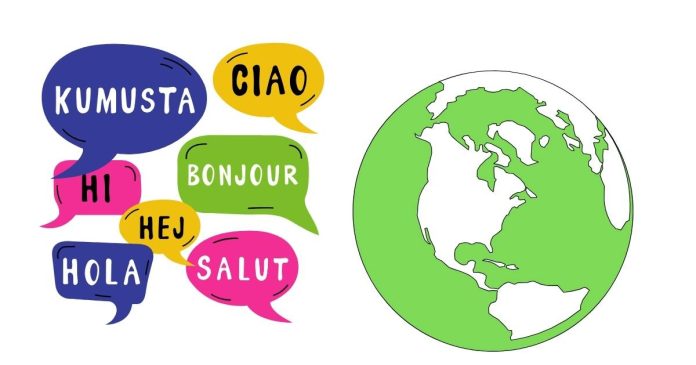Language is a cornerstone of human communication and culture. With over 7,000 languages spoken globally, some have risen to prominence due to the sheer number of speakers, historical influence, or cultural significance. Here, we explore the top 10 most spoken languages in the world based on the total number of speakers, including both native and non-native speakers.
1. English
- Speakers: Approximately 1.5 billion
- Regions: Widely spoken in the Americas, Europe, Africa, Asia, and Oceania
- Why It’s Popular: English is the global lingua franca, dominating international business, science, technology, and entertainment. Its colonial history has left a legacy of widespread use across continents.
2. Mandarin Chinese
- Speakers: Over 1.1 billion
- Regions: Mainland China, Taiwan, Singapore, and global Chinese diaspora
- Why It’s Popular: Mandarin is the most spoken native language due to China’s large population. As China continues to rise as an economic power, learning Mandarin has gained international appeal.
3. Hindi
- Speakers: Approximately 610 million
- Regions: India and Nepal
- Why It’s Popular: Hindi is one of India’s official languages and a primary medium of communication for its vast population, especially in northern and central regions.
4. Spanish
- Speakers: About 580 million
- Regions: Spain, Latin America, the United States, and parts of Africa
- Why It’s Popular: Spanish is the official language in 20 countries and is heavily promoted through literature, music, and film. It’s also widely taught as a second language.
5. French
- Speakers: Approximately 310 million
- Regions: France, Africa, Canada, the Caribbean, and parts of Southeast Asia
- Why It’s Popular: Known as the language of diplomacy, French has a significant presence in international organizations and is widely spoken across former French colonies.
6. Standard Arabic
- Speakers: About 274 million
- Regions: The Middle East, North Africa, and parts of Sub-Saharan Africa
- Why It’s Popular: Arabic is the liturgical language of Islam, making it significant for over 1.9 billion Muslims. Modern Standard Arabic is also the foundation for communication across the Arab world.
7. Bengali
- Speakers: Roughly 273 million
- Regions: Bangladesh, parts of India, and the Bengali diaspora
- Why It’s Popular: Bengali is the official language of Bangladesh and a key language in the Indian states of West Bengal and Tripura. Its rich literary tradition adds to its prominence.
8. Portuguese
- Speakers: Approximately 265 million
- Regions: Portugal, Brazil, parts of Africa, and Asia
- Why It’s Popular: Portuguese spread globally through Portugal’s colonial empire, leaving a lasting linguistic impact in countries like Brazil, Angola, and Mozambique.
9. Russian
- Speakers: Around 258 million
- Regions: Russia, Central Asia, and Eastern Europe
- Why It’s Popular: Russian is a major language for science, literature, and international diplomacy. It remains a key lingua franca in former Soviet states.
10. Urdu
- Speakers: Approximately 230 million
- Regions: Pakistan, India, and global South Asian diaspora
- Why It’s Popular: Urdu is Pakistan’s national language and holds cultural significance in South Asia through its poetry, literature, and media.
Why These Languages Matter
The prominence of these languages stems not only from their number of speakers but also from their cultural, economic, and geopolitical importance. Whether you’re traveling, expanding your business, or seeking personal enrichment, learning one of these top languages can open doors to new opportunities.
Which language would you like to learn next? Let us know in the comments.



